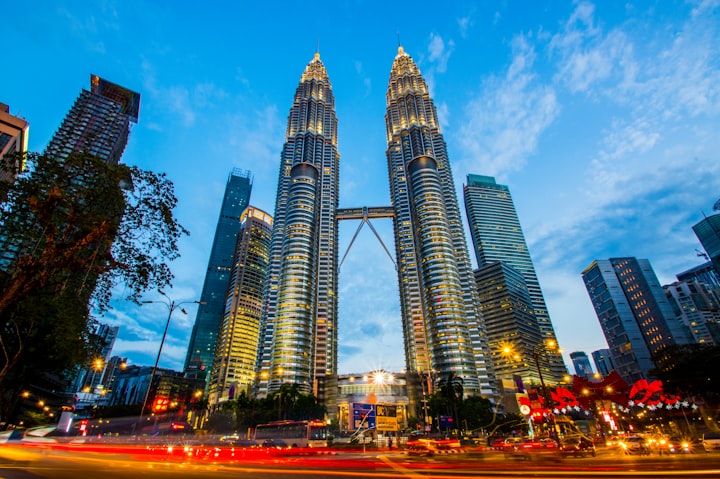The Twin Towers: An Icon Rises, Falls, and Endures
Tracing the History, Tragedy, and Lasting Legacy of New York City's Defining Towers

The Twin Towers, once an iconic representation of New York City and a symbol of human engineering prowess, was a complex that captivated the imagination of the world. Standing tall in the heart of Manhattan, the towers were more than just an architectural marvel; they were a testament to the ambition and spirit of America. This article aims to delve into the history, significance and enduring legacy of the Twin Towers, which have left an indelible mark on the city skyline and the collective memory of people worldwide.
Introduction
Constructed as a part of the World Trade Center complex, the Twin Towers – officially named the North Tower (One World Trade Center) and the South Tower (Two World Trade Center) – were completed in 1973 and 1971, respectively. At the time of their completion, they were the tallest buildings in the world, dominating the New York City skyline with their sheer size and presence. The towers were a demonstration of modern architectural techniques and cutting-edge design, embodying the essence of American innovation and the forward-thinking vision of their era.
Design and Construction
Designed by architect Minoru Yamasaki, the towers were renowned for their distinctive, framed-tube structural design, which allowed for open floor plans largely uninterrupted by columns, thus maximizing office space. Each tower stood at over 1,360 feet, with 110 floors encompassing approximately 4.3 million square feet of office space. The construction of the Twin Towers was an engineering feat, with workers laboring tirelessly to erect the steel-framework that would become a central part of the Manhattan skyline.
The design was not without its critics; some felt the large, boxy structures were too simplistic and lacked the ornate detail prevalent in other historic New York buildings. However, many applauded the towers for their minimalist aesthetic and the way they captured the spirit of the modern age.
Day-to-Day Operations and Cultural Impact
The Twin Towers quickly became a center for business and commerce. They housed offices for major corporations, government agencies and financial institutions. Beyond their corporate use, the towers featured observation decks that offered breathtaking views of New York City, attracting tourists from around the globe.
The cultural impact of the Twin Towers extended beyond their physical presence. They appeared in countless movies, television shows and photographs, becoming a visual shorthand for New York City itself. From the opening credits of "Friends" to the backdrop in "King Kong," the towers were woven into the fabric of pop culture.
The towers also had a unique social impact, providing a shared space for people from all walks of life. The complex’s plaza, with its artworks and gatherings, became a bustling communal area, and its underground shopping mall was one of the largest in the city, adding to the vibrancy of lower Manhattan.
Tragedy and Aftermath
On September 11, 2001, the Twin Towers were destroyed in a devastating terrorist attack that changed the world forever. The loss of life and the physical absence of the towers left a profound void in the heart of the city and the hearts of people around the world. The site, known as Ground Zero, became a place of mourning and reflection.
The destruction of the Twin Towers was not just the loss of two buildings; it was an event that altered the course of history, leading to wars, changes in security protocols worldwide and a new awareness of global interconnectivity. The skyline of New York City would never be the same, nor would the sense of invulnerability that many had previously felt.
Legacy and Renewal
In the years following the attacks, plans were developed to rebuild the World Trade Center site. The One World Trade Center, also known as the Freedom Tower, was constructed as a part of the new complex. It stands near the footprint of the original North Tower as a symbol of resilience and hope, reaching a symbolic height of 1,776 feet to represent the year of America's independence.
The National September 11 Memorial and Museum now occupies part of the site, serving as a tribute to the nearly 3,000 lives lost. The reflecting pools, set within the footprints of the original towers, are a poignant reminder of what once stood there, while the surrounding skyscrapers, including the new One World Trade Center, signify the city's determination to move forward while honoring its past.
Conclusion
The Twin Towers were more than just buildings; they were emblematic of New York City's spirit and ambition. Their absence has left a tangible gap, but the stories and memories associated with them continue to inspire and inform future generations. The Twin Towers’ legacy is one of innovation, cultural significance and resilience in the face of tragedy. It is a legacy that endures in the rebuilt skyline, in the memorial that stands in their place, and in the collective memory of a world that witnessed their majesty and mourned their loss. As New York continues to evolve, the story of the Twin Towers remains a powerful reminder of the city's ever-renewing spirit and capacity for renewal.





Comments
Rajeshkumar G is not accepting comments at the moment
Want to show your support? Send them a one-off tip.